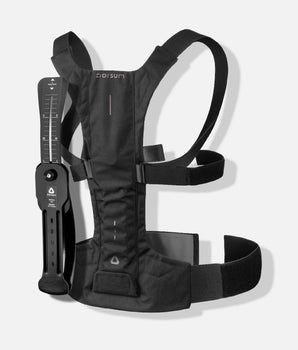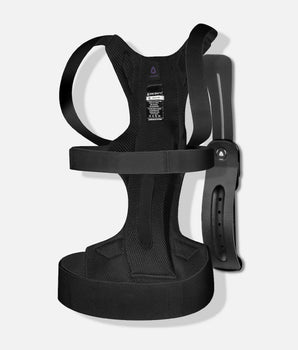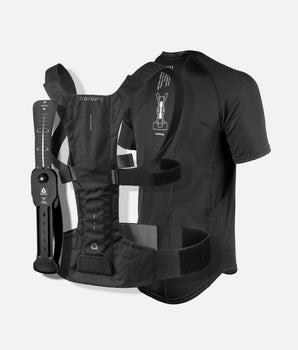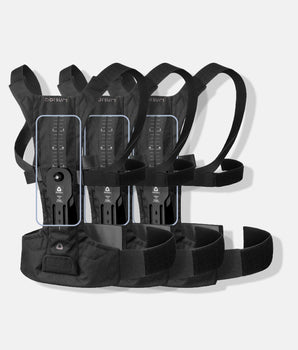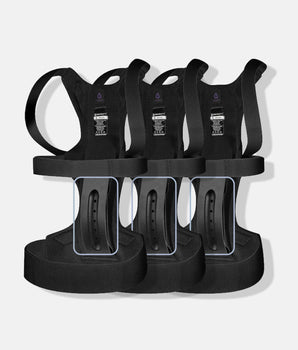Most likely, you are reading this sitting down, and possibly in front of your desktop computer. In August of 1981 IBM released the first Personal Computer (PC), the 5150. It paved the way for a revolution of modern life that made work and communication more efficient, and caused productivity, as well as professional expectations to rise. This is not an article about the history of computing, but it is an article about how such a revolutionary invention is challenging millions of years of evolution by exposing humans to prolonged periods of sitting. And it’s killing our backs!
You see, we evolved from invertebrates to inhabit the land and in doing so were exposed to much greater forces of gravity. This led to the development of a spine around which our bodies could more easily accomplish the new tasks it was taking on. As primates and early humans began hunting and gathering, a need for improved efficiency became paramount and eventually we began to walk upright. It is at this point that the human spine began to decouple and segment into something that we would today recognize as a spine. And it all happened because we needed to move easier, with greater efficiency so we could cover vast distances in search of food, shelter, and respite from the elements.
The Demands of Modern Life
Today, many humans spend their days sitting behind a desk and computer or behind the wheel of an automobile. Our ancestors, with the exception of child bearers, seldom sat for prolonged periods and instead traveled long distances by foot to accomplish the days’ chores. So how is a spine designed for such arduous locomotion meant to deal with the unique stresses of prolonged periods of sitting? Well, it adapts. Much like our spine adapted to the demands of prehistoric life, our bodies are beginning to adapt to the new stresses that modern life presents. These adaptations take many millennia to achieve and the process, like most change we deal with, is painful. Before we begin to see adaptations to the structure of the body – the bones and ligaments that hold them together, we see adaptations to the muscular system, which help to position those bones and ligaments and maintain the optimal alignment of joints. When agonist & antagonist muscles develop an unbalanced relationship, it’s our joints that hurt the most. Sure, we might feel muscle tightness and aches and pains, but it’s when they truly shorten and reposition the joint alignment that we feel the debilitating aches and pains in our knees, hips, and back.
Sitting for prolonged periods shortens muscles, specifically your hip flexors (the illiopsoas muscle). Furthermore, tight/short hip flexors inhibit the function of the antagonist group: the gluteals. The Glutes (maximus, minimus, medius) are the most powerful muscle group in our bodies – a direct result of millennia of evolution to improve efficiency of walking and running. So with tight hip flexors and weak or inhibited Glutes our pelvis, sacrum, and spinal complex is compromised from its most efficient alignment. The result is a condition known as anterior pelvic tilt, and it puts a ton of stress on the ligaments and joints of the lower back – a primary cause for chronic lower back pain!
Your Hip Flexors


Sit Up Straight and Take Action
It’s not all doom and gloom, though! In fact, many organizations and companies today have recognized that their own demands of their employees leads to increased healthcare costs to the company and have begun to enact programs to promote employee health. The reality of business is that it often comes down to dollars and cents for leadership to buy-into employee wellness programs, and it’s not until the cost of healthcare associated with employee wellness surpasses the costs of preventative program that businesses are more willing to enact lunch hour yoga, walking meetings, after-work run clubs and similar perks.
Yet not all businesses and organizations are as progressive and forward thinking as others, and many of us are still sentenced to 9 hour days behind a keyboard or wheel of a car. So it becomes the individual’s responsibility to advocate for their own health and wellbeing by being proactive and offsetting the imbalances formed by prolonged sitting. That’s right! It’s up to you to maintain your health, and we’re here to empower you to do so with some simple routines to combat the imbalances formed through our modern lifestyles.
Designed For You
We’ve provided you a free Dorsum Posture Guide for Sitting that contains simple exercises and posture cues that you can immediately apply to your daily routine. With no more than a commitment to being aware of posture, you can begin to see improvements in your posture and daily discomfort within a few weeks. For this routine you don’t need weights, you don’t need to rip your abs apart on a yoga mat (though it wouldn’t hurt!), you just need to be mindful of the commitment to improving your posture and make the best use of your down time.
As with all adaptations, whether dictated by evolution or your fitness routine, take time. You must not expect a silver bullet to solve your low back pain and you need to be consistent in your approach to establishing a balance in your muscular system. At Dorsum, we’ll soon be releasing a discrete postural aid that you can wear daily under your usual work attire, which will help remind you to maintain proper posture throughout the day.

Sign up to our newsletter to receive FREE weekly Perfect Posture Guides as well as product release dates and special invites to upcoming events.



